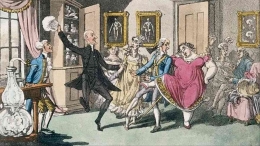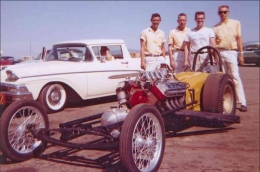Beyond The Screen
Have you ever had the sensation of your entire body tingling with excitement while trying to become the best racer in a racing game? Your fingertips tingle eagerly as you press an unique button on the controller you wield. It simulates driving at a high speed, passing other competitors and forcing them to lose ground to you as you press it. This is what happens when you employ the Nitrous Oxide (N2O)/Nitrous speed boost function.
In racing games, the nitrous oxide function is always applied to the vehicles, giving the players an option. The nitrous oxide function was first used in the racing car game series "Need for Speed". Racing and vehicle-related passions took off after this game, particularly after "Need for Speed: Most Wanted" was released. In this game, players must steer a car at a fast pace while being pursued by police in order to reach the goal of becoming the number 1 blacklist in Rockport city.

Nitrous oxide is not only limited to racing games and movies, but also attending a real-world drug racing event. That's correct—nitrous oxide is not a fictional thing. Perhaps some fans do not believe that there is no real-world example of speeding up quickly. Nitrous oxide accelerates your car to travel really fast is quite incredible. Nitrous oxide has the same function in fiction as it does in real life, which is to greatly accelerate automobiles. Everything will alter even if your automobile has 150 horsepower when you use nitrous oxide.
Into the next section, we'll go deeper with nitrous oxide. Get your seat belts ready and we're off to the tracks!
Nitrous Oxide History
Enthusiasts sometimes refer nitrous oxide as a stronger drug since, as we all know, it can quickly accelerate your car. Speaking of drug, nitrous oxide, also referred to as "laughing gas" in the medical field. Laughing gas is colorless, non-flammable, and has a faintly sweet odor. Nitrous oxide consists of an oxygen atom bonded to two nitrogen atoms. Within the medical area, particularly in the surgical and dental domains, this gas is utilized to generate anesthesia and alleviate pain.
This gas was discovered in 1772 by a researcher named Joseph Priestley while he was conducting experiments on gas isolation. Priestley detected the gas N2O when ammonium nitrate was burned in the presence of iron filings.
Humphrey Davy of the Pneumatic Institute in Bristol, England, conducted experiments on the physiological characteristics of gases, such as their impact on breathing, after Priestley's studies. He even administered the gas to guests of the institute, and he came up with the term "laughing gas" after observing the hilarious impact it had on those who inhaled it! For the following forty years or so, public exhibitions and recreation constituted the main uses for N2O. At carnivals and itinerant medical exhibits, customers would pay a modest fee to breathe in the gas for one minute, a practice known as "nitrous oxide capers." People would stand there in a stupor, laughing and acting goofy until the effects of the drug abruptly ended. (Note*: Nitrous Oxide uses for medical and engine are different. For engine, they add a small amount of sulfur dioxide (SO2) mixed in. It’s unpleasant to inhale and has the potential to harm the lungs).
Nitrous oxide was first used as an anesthetic in dentistry by scientists in the early 1840s. In Hartford, Connecticut, Gardner Quincy Colton staged a presentation at which neighboring dentist Horace Wells saw Cooley's leg injury. After realizing that N2O might have analgesic effects, Wells asked Colton to take part in a study. The first N2O was introduced as a dental and medical painkiller when Colton gave it to Wells without causing him any discomfort.

So how did the usage of nitrous oxide for machine-assisted applications become more common? During World War 2, Germany was the first nation to use nitrous oxide in a military aircraft. They took advantage of this to their advantage and accelerated their fighting speed. Because of their faster speed, they should be able to bomb without worrying about opponent interceptions, giving them an advantage in close-quarters aerial warfare. However, it proved challenging to put this theory into practice at greater altitudes in order to enhance aircraft performance. The air around the plane will get thinner as it rises. Less oxygen is present in this less dense air, which is necessary for the engine to burn the fuel in the combustion chamber effectively.
Although oxygen is actually required for engine combustion, this does not imply that pure oxygen may be employed to boost engine speed. Barney Navarro, a pioneer, provided evidence for this. Because of the intense oxygen concentration in the fuel mixture, which made it extremely reactive, the experiment ended in an explosion.
Dick Flynn, a racer, found out about Navarro's tests following this. Among other things, Flynn found that nitrous oxide improved the engine's oxygen content while introducing a much safer way to do it. Nitrous oxide is inert at ordinary temperatures, but the heat and high pressure inside the combustion chamber cause these bonds to dissolve and release oxygen. In comparison to air alone, this fills the cylinder with more oxygen. That is to say, it fills the cylinder with a high concentration of oxygen without igniting bothersome spontaneous explosions. The machine operated flawlessly once Flynn applied it. This moment led a racer named Gary Harms, who was Flynn's partner, to win a trophy at the drag racing event in 1958. This is also be the first moment that nitrous oxide has been used in a drag-race event.
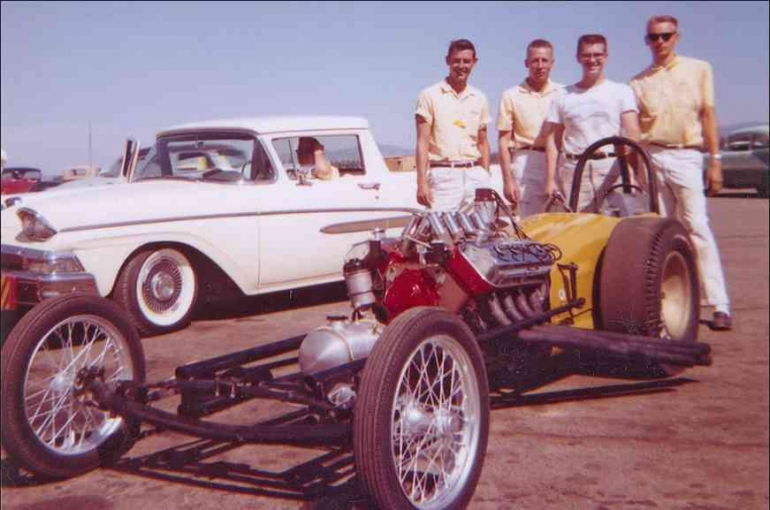
Nitrous Oxide Injections
After going through several stories about nitrous oxide, now you will enter the side of gas injection into the engine. Nitrous oxide has several types of injection and each injection has different characteristics and results. There are two types of nitrous oxide system designs:
- Dry systems leave the upstream intake dry of fuel because they only introduce nitrous oxide into the intake the additional fuel needed is supplied by the vehicle's existing fuel system.
- Wet systems will wet the intake area with fuel because they introduce a mixture of nitrous oxide and additional fuel upstream of the intake runners.
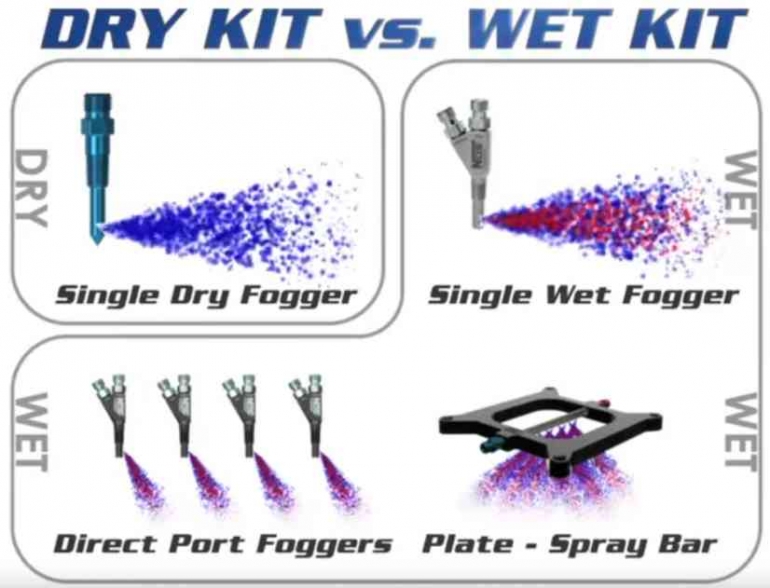
There are four main methods for introducing nitrous into your engine:
- Single dry fogger, NOS dry fogger systems have a single fogger nozzle, tuning jet, and nitrous line. They introduce fuel to the engine's fuel injectors, requiring the existing fuel system to increase fuel output during nitrous injection to prevent lean conditions. There are two methods to increase fuel supply: increasing fuel pressure by bleeding off nitrous pressure from the solenoid, or increasing fuel injector opening time by tricking the vehicle's electronic control module (ECU). This method is specific to each engine type and engine control design.
- Single wet fogger, NOS single wet fogger systems are a wet kit that contains both nitrous and fuel solenoids, installed on fuel-injected engines. They are positioned six to twelve inches upstream with the throttle body, delivering fuel and nitrous simultaneously. Additional fuel can be obtained by tapping into the Schrader valve or installing a second fuel cell, combining additional fuel with nitrous air for increased power.
- Direct port foggers, an NOS direct port system uses multiple foggers for each intake runner, introducing fuel and nitrous jets before each cylinder. This system increases power and accuracy but is more complicated to setup. Multiport foggers can be used on carbureted or fuel injected engines, but single plane intake manifolds are preferred for carburetor applications. A second fuel cell and pump are preferred for fuel injection.
- Wet plate systems, an NOS plate system is a plate with an integrated spray bar, accepting tuning Jets and fuel or nitrous connections. Wet kits have nitrous and fuel solenoids, delivering mixtures between intake manifold and carburetor. Additional fuel can be supplied through the vehicle's fuel system or a separate fuel cell.
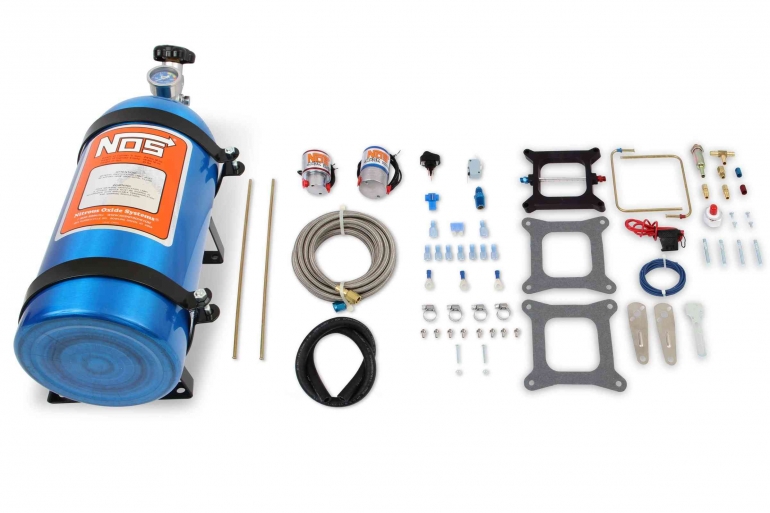
How to Choose The Best System for Your Engine
Nitrous oxide can be injected into an engine as either a liquid or gas form, and its use for power generation depends on the state of the nitrous molecules. The separation of nitrous molecules in the combustion chamber allows for more fuel burning, leading to increased horsepower. Nitrous also has the advantage of vaporization, which causes a rapid drop in temperature, making the incoming air-fuel mixture denser, further increasing power.
There are two types of nitrous systems: wet and dry systems. Wet systems add additional fuel with a separate pump through the same plate or nozzle, activated by a switch controlled by the driver or set up on a throttle linkage. The amount of fuel added is determined by the jet size installed in the plate or nozzle, which can be swapped out for a different sized orifice to achieve the desired air-fuel ratio.
Wet nitrous systems are typically used on carbureted engines but are also used in EFI applications due to the cost-effectiveness of not making significant changes to the existing fuel system. Dry nitrous systems rely on the existing fuel system, whether fuel injected or carbureted, to supply the additional fuel needed when the nitrous system is activated. They can be activated with a switch controlled by the fuel injection controller or ECU, allowing the EFI system to calculate and determine when and how the additional fuel is added.
Choosing the right nitrous system depends on your current setup, expectations, budget, mechanical abilities, and system limitations. It's essential to consider your future plans when selecting a nitrous kit.
Nitrous Oxide Legality
Nitrous oxide legality may be governed by a number of state laws. This is due to the possibility of public misuse of nitrous oxide. Recently, there has been misuse of nitrous oxide gas in United Kingdom. People act in this way because the gas gives them a euphoric feeling. Nevertheless, they recklessly and without any dosage ingested this gas immediately while it was at a high concentration. The following are possible side effects of breathing in this gas:
- Damaged your throat and lungs
- Stop your breathing
- Slow your heart to a dangerous level
- Become addictive
In addition, nitrous oxide can also cause:
- Dizziness
- Severe headache
- Sound distortions and hallucinations and can stop people from thinking straight
- Short-lived but intense feelings of paranoia
With long-term use, nitrous oxide can cause a person to experience vitamin B12 deficiency. In severe cases, B12 deficiency can cause neurological changes.
As a result, nitrous oxide is legally categorized as a dangerous class C drug. There are basic sentencing guidelines for the manufacturing and/or supply of Class C substances in the United Kingdom. The maximum punishment for someone found guilty of producing or supplying a Class C drug is 14 years in prison, an unlimited fine, or both. However, the exact sentence a defendant receives will depend on the facts of their case, the offense they plead guilty to, and the prosecution's ability to prove its case beyond a reasonable doubt.

Putting drugs aside, what about nitrous oxide, which is only found in cars? Is that the recognized legal position?
To that, the answer is yes. It is not illegal to utilize nitrous oxide properly and without breaking any laws pertaining to its availability. You can give your car a nitrous oxide canister treatment. The most crucial thing is to be aware of the nitrous oxide cylinder's capacity in relation to your equipment. This is crucial since improper usage could harm your car if the right amounts or requirements aren't followed. As a result, use something wisely. In order to avoid any losses, you should think things through thoroughly before adding nitrous oxide to your engine.
Conclusion
Nitrous Oxide, a gas with a history dating back to the late 18th century, has played a significant role in various industries, including gaming, cinema, medical science, and automotive engineering. Its popularity began in gaming with titles like "Need for Speed," which later became a popular racing game and the "Fast and Furious" movie franchise. Initially used as a laughing gas in medicine, Nitrous Oxide's application as an anesthetic in dentistry transformed its role from recreational amusement to a tool for pain relief.
During World War II, Germany used Nitrous Oxide's acceleration capabilities for military aircraft. Pioneers like Barney Navarro and Dick Flynn discovered Nitrous Oxide's ability to augment engine oxygen content without risking explosions, leading to its integration into racing and performance enhancement. Nitrous Oxide's legal status has been scrutinized due to its misuse as a recreational drug, leading to legislative measures in some regions categorizing it as a controlled substance due to potential health hazards and addictive properties.
However, Nitrous Oxide remains legal in automotive engineering, provided it complies with regulations and safety standards. The crux lies in responsible utilization, whether in gaming, cinema, medicine, or engine enhancement. The power of Nitrous Oxide to propel speed and performance comes with a caveat: the need for prudence and adherence to legal and safety protocols. Nitrous Oxide's legacy embodies a contrast between innovation, thrill, and the pursuit of pushing the boundaries of speed, summarizing a saga that continues to captivate diverse human pursuits.
Reference
Gillman, M. A. (2019). Mini-review: a brief history of nitrous oxide (N2O) use in neuropsychiatry. Current Drug Research Reviews Formerly: Current Drug Abuse Reviews, 11(1), 12-20.
Hordemann, G. (2016). The First Drag Racers to Ever Use Nitrous Oxide. Motortrend. https://www.motortrend.com/news/the-first-drag-racers-to-ever-use-nitrous-oxide/
Hot Rod Staff. (2023). Bottle Basics: What You Need To Know About Nitrous Oxide. Motortrend. https://www.motortrend.com/features/bottle-basics-982-1607-28-1/
Huziej, M. (2023). What are class C Drugs?. CPD Online College. https://cpdonline.co.uk/knowledge-base/mental-health/what-are-class-c-drugs/#what-kind-of-drugs-are-considered-class-c
Langfield, T. (2006). The Nitrous Oxide High-Performance Manual: How to Specify, Install and Optimise a Nitrous Oxide System for High-Performance. Veloce Publishing Ltd.
Movie Car Chases HD. (2017). 2 FAST 2 FURIOUS - First Race (S2000 vs RX-7 vs Supra vs Skyline) #1080HD [Video]. https://www.youtube.com/watch?v=i3TzAfMLQ5w
Movieclips. (2011). 2 Fast 2 Furious (2003) - Bridge Jump Scene (1/9) | Movieclips [Video]. https://www.youtube.com/watch?v=tCb_6mO6CmE
Neil, D. (2012). The First Nitrous Oxide-Injected Hydroplane in the World. Hydroplane History. https://hydroplanehistory.com/other/nitrous_oxide_the_first_nitrous_oxide-injected_hydroplane_in_the_world.html
Rough, E., Meade, L., Baker, C. (2023). Nitrous oxide becomes a Class C drug. UK Parliement. https://commonslibrary.parliament.uk/nitrous-oxide-no-laughing-matter/
Smith, J. (2021). Nitrous Oxide Basics: Dry vs Wet Nitrous, Single and Multiport Setups, and Nitrous Foggers for Carburetor and EFI. Holley. https://www.holley.com/blog/post/nitrous_oxide_basics_dry_vs_wet_nitrous_single_and_multiport_setups_and_nitrous_foggers_for_carburetor_and_efi/
Stoermer, J. (2018). Wet vs Dry Nitrous - How To Choose - Nitrous 101. Holley. https://www.holley.com/blog/post/wet_vs_dry_nitrous_-_how_to_choose_-_nitrous_101/
Your Room. (2023). Nitrous Oxide: The Facts. https://yourroom.health.nsw.gov.au/publicationdocuments/Nitrous_Oxide_Fact_Sheet_updated_2023.pdf
Follow Instagram @kompasianacom juga Tiktok @kompasiana biar nggak ketinggalan event seru komunitas dan tips dapat cuan dari Kompasiana. Baca juga cerita inspiratif langsung dari smartphone kamu dengan bergabung di WhatsApp Channel Kompasiana di SINI









